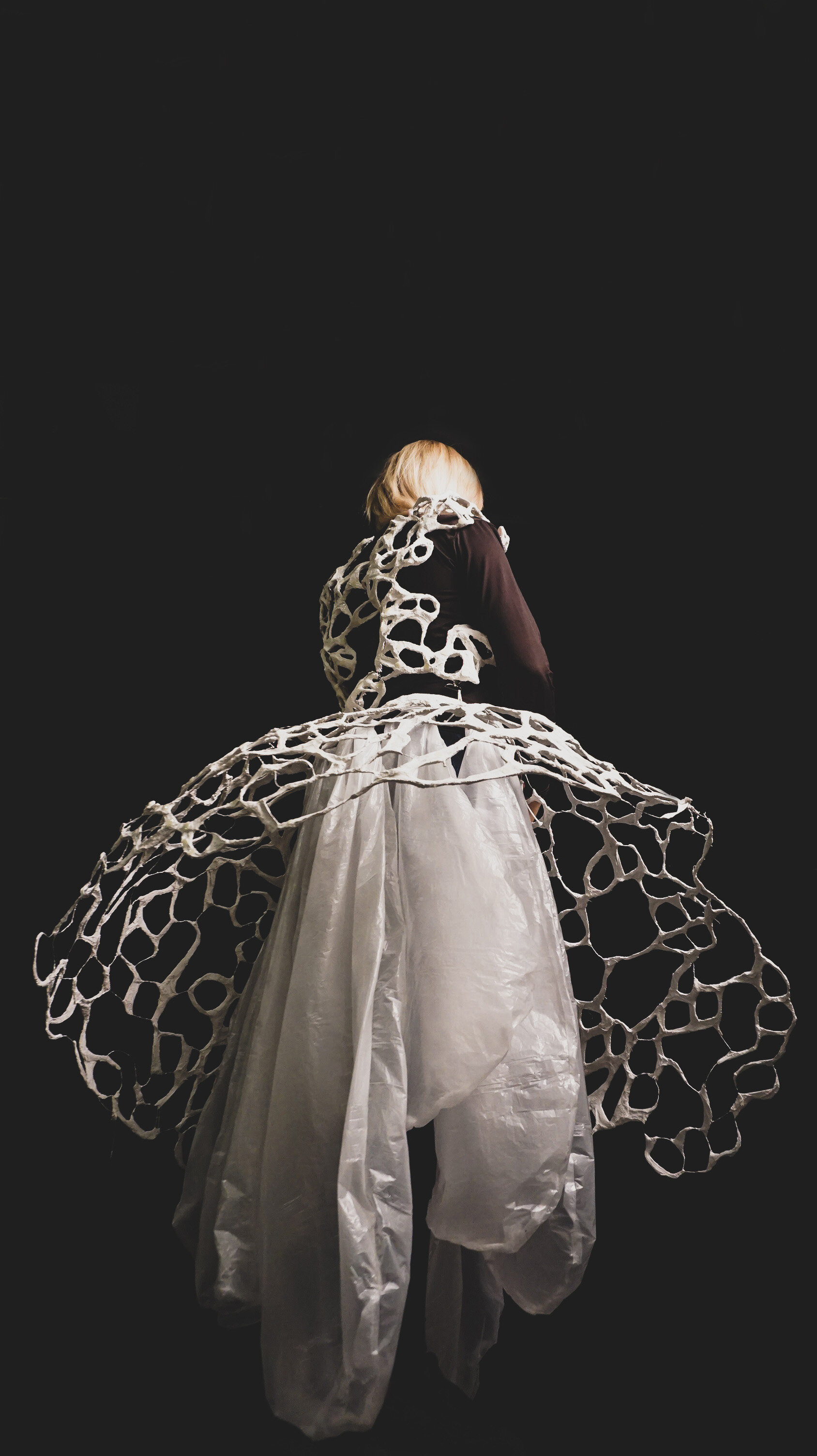Fashion + Architecture
Imagining a far reaching future for humanity through an exploration of near-body architecture
Fall 2019
The role and understanding of architecture is continuously changing. In a contemporary setting, this change is occurring faster than ever. This studio urged the exploration of near and far body architecture, the reconsideration of how we interact with our surroundings and the role/meaning of architecture in our daily lives.
Set far in the future where the human species and climate have been pushed to extremes, this work imagines an outcome of assimilation between biological and technological forces. Wrought with cataclysmic events over the last millennia, humans have retreated to the depths of the ocean. In order to exist in such extreme conditions, Homo sapiens have evolved a mutualistic relationship with marine organisms, developing hybridized exo-calcareous skeletons to support, feed and communicate. The bodies within have been reduced to mere vestigial traces of a life once lived. Reproduction, speech and eating as we know it are no more, but with these adaptations comes a new understanding of human identity.
Professor: Vikram Prakash
Beginning an exploration of near and far-body architecture, each student dove into the works of architect Enric Miralles and fashion designer Alexander McQueen. While both starkly different upon initial impressions, both their works possess a sensitivity to their surroundings and identity through form, space and storytelling. This study used collage as a way to express commonalities between the two.
Concept
Increasingly extreme environmental pressures have caused a drastic shift in human way of life. Over time, the merging of natural adaptations with the technological harnessing of biological systems has supported survival in these harsh new climates. With this change came greater connectivity, responsiveness and sensitivity to our surroundings. However, these adaptations, newfound tools and symbiotic relationships have caused many bodily functions to shift drastically, leaving vestigial remnants as a reminder of life once lived.
Examining the intersection of body and architecture, this work reflects on the human experience and current relationship with our surroundings both through an environmental and textural setting.
Made from wrapped wire, plaster gauze and plastic bags, the work incorporates fluorescent spots as a bioluminescent mechanism intended to further solidify the change of our being in association with how we live, survive and interact with the world around us.
Concept collages touching on an interpretation of scale and the built environment within a futuristic setting.









Hypertrophic Procegenation
Video short that played during the runway show and final presentation of this piece.


